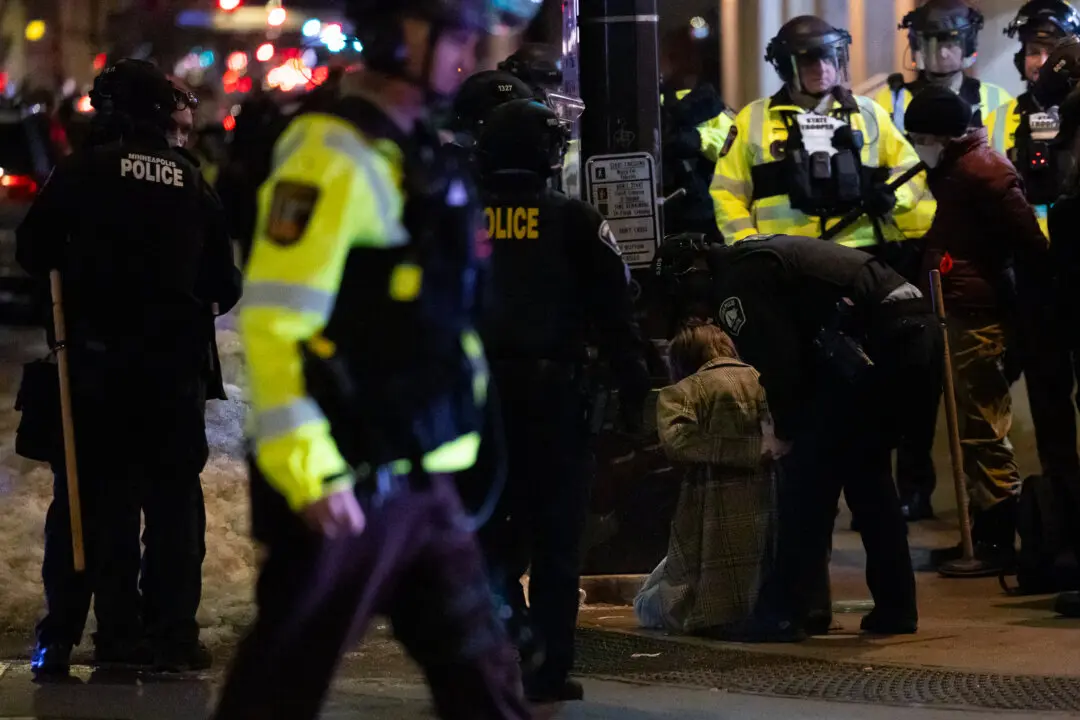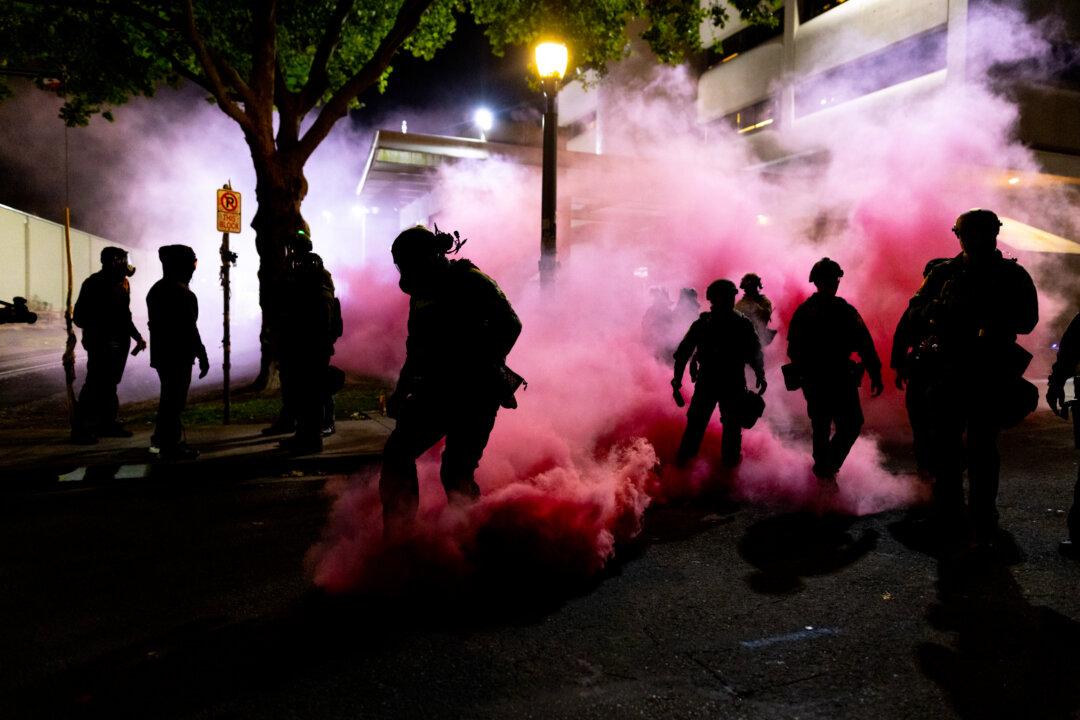LOS ANGELES—As the morning sun created dramatic shadows against the skyscrapers of Los Angeles, a man stood in the middle of 7th street blocking traffic and looking in his pockets for something that wasn’t there.
He ignored the traffic, while cars gently moved around him and carried on with their commutes, until he slowly dragged his feet to an encampment-filled sidewalk. Simultaneously, a man began to urinate openly in public, as a mother quickly turned her head the other way while she pushed a stroller along the busy roadway, as the sidewalks were no longer useable, covered in tents and tarps.




